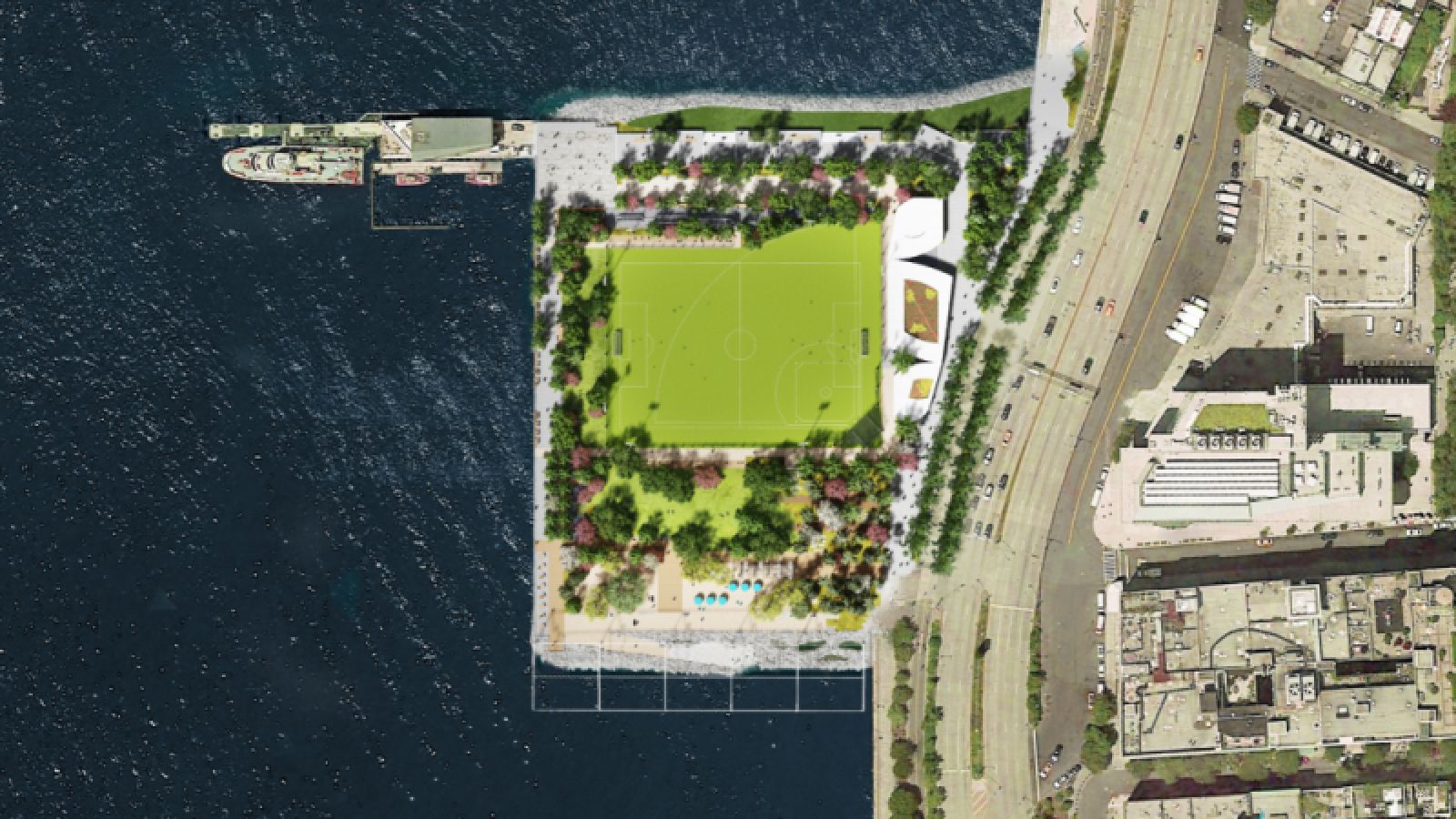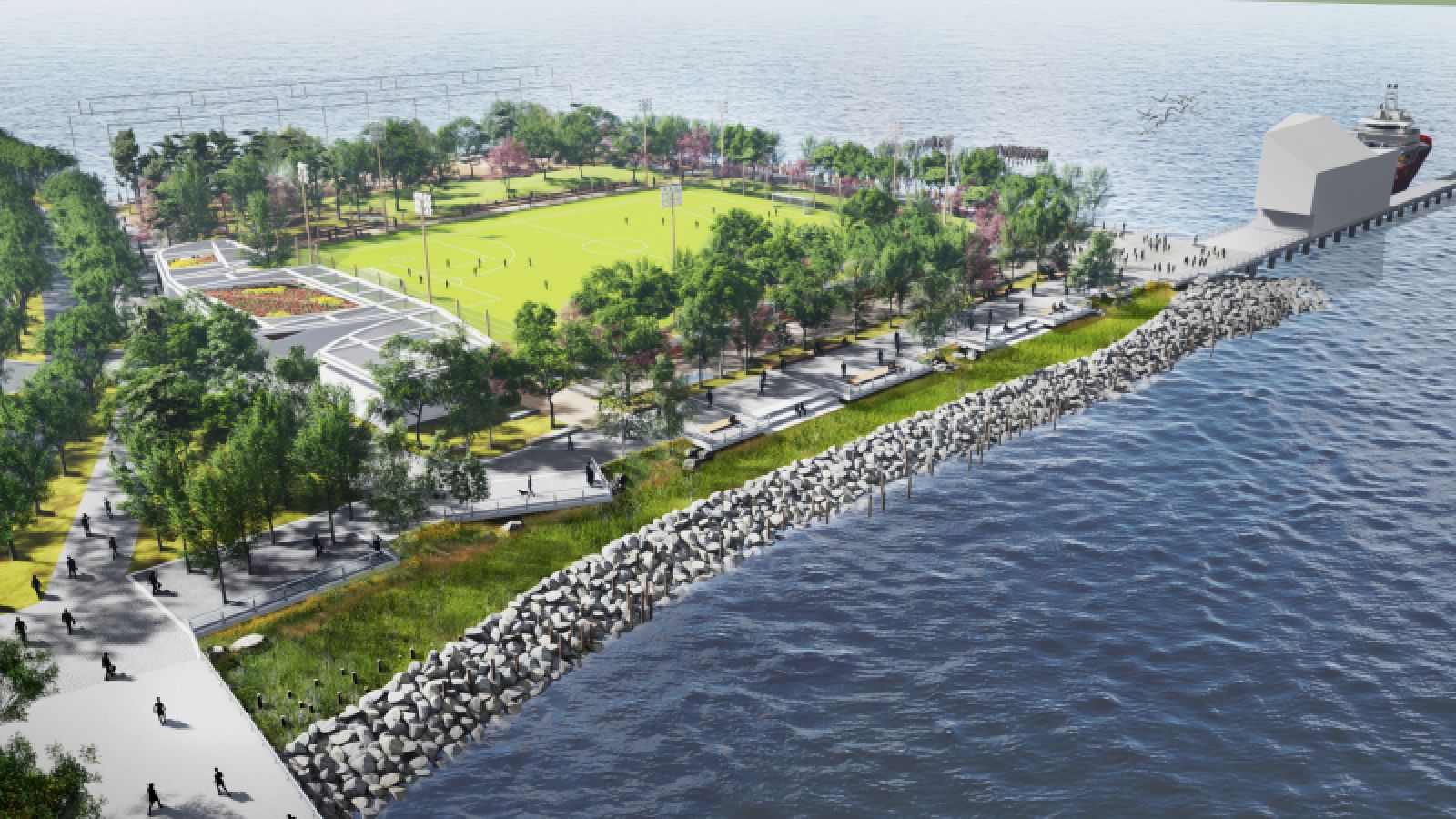Gansevoort Peninsula is a 5.5-acre public space, one designed to welcome all New Yorkers by weaving together active and passive programming into a large green oasis as part of the 4-mile-long Hudson River Park. Located in the Meatpacking District, the now-vacant site is one of the last undeveloped lots along the waterfront that make up Hudson River Park.
The western edge of the site encompasses the last remaining vestige of 13th Avenue, and unlike much of the Hudson River Park, Gansevoort is neither pile-supported nor edged by a historic bulkhead. This allows for an incredible opportunity to engage directly with the water, something that is more challenging elsewhere in Hudson River Park.Working closely with the community and stakeholders through a series of meetings and workshops, Gansevoort Peninsula’s design reflects this input and appeals to a wide spectrum of park users through its programming.

Image © nARCHITECTS
The design brings together a salt marsh, a multi-use sports field, a large topographic lawn, an upland beach with kayak access, a dog run, an outdoor gym, and numerous gardens and groves, all while maximizing water edges and views. On its northern edge, Gansevoort Peninsula’s salt marsh and submerged aquatic habitat are immersed amongst a field of existing wood piles. Hudson River Park’s 400 in-water acres are a designated Estuarine Sanctuary, providing critical habitat for over 70 species of fish.
The salt marsh provides a signature estuary habitat for aquatic and avian species, supporting the Hudson River Park Trust’s robust programming for science and estuary education. A wide promenade features overlook balconies and seating steps that allow visitors and student groups to get down closer to the water. Incorporating the one-block stretch that remains of 13th Avenue, Gansevoort Peninsula’s 13th Ave Promenade reinstates and celebrates a historical element unique to this site.
Lounge seating and a picnic grove along the promenade allow visitors to soak in river and skyline views. Gansevoort Peninsula’s southern edge is home to Manhattan’s first public beach with a sandy beach that includes shade trees, beach furniture, and a spray feature for cooling. The upland beach gives way to a series of dunes and a combination of riverine boulders, concrete stepping blocks, and rip rap that protect the beach from changing tides and rough waters.
Kayak launch points, tidal pools, and the beach all work in concert with the park’s overlooks and salt marsh on the northern edge, reconnecting people to the water and creating a more resilient shoreline. The edge is designed to incorporate David Hammons’ Day’s End, a large-scale public sculpture donated by the Whitney Museum of American Art that evokes the history of New York’s industrial waterfront and Gordon Matta-Clark’s artwork that once occupied the site. Source by nARCHITECTS.
- Location: New York City, USA
- Architect: nARCHITECTS
- Civil & Traffic Engineering: Philip Habib & Associates
- Marine & Geotech Engineering, Topographic Survey: Langan
- Site MEP & Electrical Engineering: Altieri Sebor Wieber, LLC
- Building MEP & Site Electrical: PlusGroup
- Building & Site Structural Engineering: Silman
- Natural Resources & Ecology: eDesign Dynamics
- Hydrology & Sediment Modeling: CAS Group, LLC
- Bathymetric Survey: KS Engineers
- Soil Science: Craul Land Scientists
- Permitting & Waterfront Review: TMS Waterfront
- Expediting: JAM
- Irrigation: Northern Designs
- Lighting Design: Horton Lees Brogden Lighting Design
- Signage & Wayfinding Design: Pentagram
- Cost Estimating: Dharam Consulting
- Code & Life Safety Consulting: Holmes Keogh Associates
- Security: Thornton Tomasetti
- Images: Courtesy of nARCHITECTS






